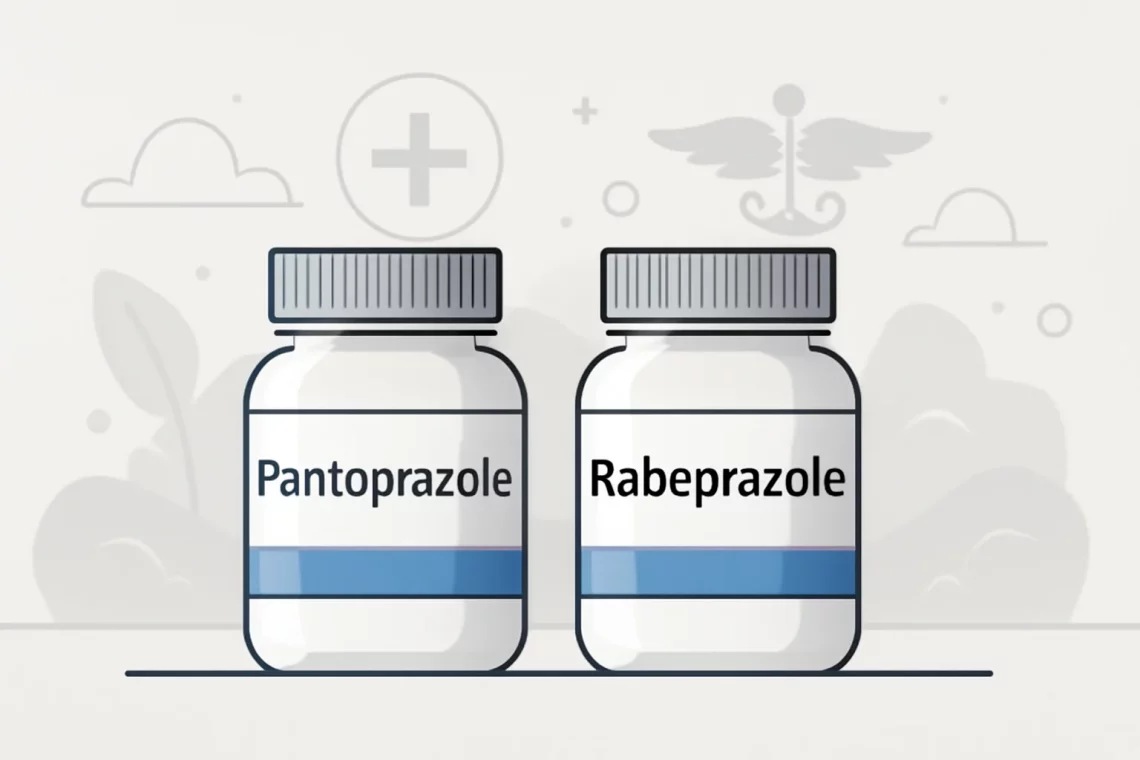
Pantoprazole vs Rabeprazole: Key Differences and Uses Explained
Pantoprazole and rabeprazole are two medications that belong to a class of drugs known as proton pump inhibitors (PPIs). These medications are primarily used to treat various gastrointestinal disorders, including gastroesophageal reflux disease (GERD), peptic ulcers, and Zollinger-Ellison syndrome. By inhibiting the proton pump in the stomach lining, both pantoprazole and rabeprazole effectively reduce the production of stomach acid, providing relief from symptoms associated with excess acidity.
While both medications serve similar purposes and are often prescribed for comparable conditions, they differ in their chemical composition, pharmacokinetics, and potential side effects. Understanding these differences can help patients and healthcare providers make informed decisions about which medication might be more suitable for a specific case. As the prevalence of acid-related disorders continues to rise, knowledge about available treatment options becomes increasingly important for effective management.
In this article, we will explore the key differences and similarities between pantoprazole and rabeprazole, helping to clarify their roles in the treatment of acid-related disorders.
Mechanism of Action
Both pantoprazole and rabeprazole operate through a similar mechanism of action, targeting the proton pump in the gastric parietal cells. The proton pump is responsible for the final step in the production of gastric acid, where hydrogen ions are secreted into the stomach lumen. By inhibiting this enzyme, PPIs effectively lower the amount of acid that reaches the stomach.
Pantoprazole is a substituted benzimidazole that irreversibly binds to the proton pump, leading to a long-lasting effect on acid secretion. This binding prevents the conversion of potassium ions into gastric acid, thereby minimizing acidity in the stomach. The reduction in acid production alleviates symptoms associated with GERD and promotes the healing of peptic ulcers.
On the other hand, rabeprazole, also a substituted benzimidazole, acts in a similar manner but with some pharmacokinetic differences. Rabeprazole is known for a faster onset of action compared to pantoprazole, which can be particularly beneficial for patients who require immediate relief from acid-related symptoms. Its rapid absorption and quicker peak plasma concentrations allow for effective management of acute episodes of heartburn or acid reflux.
Both medications are effective, but their individual pharmacodynamic properties may make one more suitable than the other based on a patient’s specific needs and response to treatment. Understanding these nuances can help healthcare providers tailor therapy to optimize outcomes for their patients.
Indications and Uses
Pantoprazole and rabeprazole are both indicated for the treatment of various acid-related disorders. Their primary use is in the management of gastroesophageal reflux disease (GERD), a chronic condition characterized by the backflow of stomach acid into the esophagus. This condition can lead to symptoms such as heartburn, regurgitation, and difficulty swallowing.
In addition to GERD, pantoprazole is often prescribed for the treatment of peptic ulcers, providing relief from ulcer-related pain and discomfort while promoting healing. It is also used in conjunction with antibiotics to eradicate Helicobacter pylori, a bacterium associated with peptic ulcers.
Rabeprazole shares similar indications, being effective in the treatment of peptic ulcers and GERD. However, it is also used in the management of Zollinger-Ellison syndrome, a rare condition characterized by excessive gastric acid production. The versatility of rabeprazole in treating this specific syndrome highlights its unique therapeutic applications.
Moreover, both medications are beneficial in the prevention of gastric ulcers in patients taking nonsteroidal anti-inflammatory drugs (NSAIDs), which can irritate the stomach lining. By reducing gastric acid secretion, they help protect the stomach from potential damage caused by prolonged NSAID use.
Ultimately, the choice between pantoprazole and rabeprazole may depend on the specific condition being treated, the patient’s medical history, and any potential interactions with other medications they may be taking.
Side Effects and Considerations
While pantoprazole and rabeprazole are generally well-tolerated, they can cause side effects, which may vary from person to person. Common side effects associated with both medications include headache, diarrhea, nausea, and abdominal pain. These symptoms are usually mild and tend to resolve with continued use or dose adjustment.
However, there are some important considerations regarding long-term use of PPIs, including both pantoprazole and rabeprazole. Studies have suggested that prolonged use of these medications may be associated with an increased risk of certain complications, such as Clostridium difficile infection in the colon, kidney disease, and bone fractures. This is particularly relevant for elderly patients or those with pre-existing health conditions.
Additionally, it is essential to note that both medications can interfere with the absorption of certain nutrients, such as magnesium and vitamin B12. Patients on long-term therapy may require monitoring for deficiencies, and supplementation may be necessary in some cases.
For individuals with specific health concerns, such as liver disease or hypersensitivity to PPIs, caution is advised when prescribing these medications. Healthcare providers should conduct a thorough assessment of a patient’s medical history and current medications to ensure safe and effective treatment.
In summary, while pantoprazole and rabeprazole offer significant benefits in managing acid-related disorders, it is crucial to be aware of potential side effects and to engage in open communication with healthcare providers regarding any concerns.
Conclusion
Choosing between pantoprazole and rabeprazole can be a complex decision that requires consideration of various factors, including the specific condition being treated, the patient’s medical history, and individual responses to therapy. Both medications are effective in reducing gastric acid production and alleviating symptoms associated with acid-related disorders.
Ultimately, the best approach is to work closely with a healthcare provider, who can tailor treatment plans based on individual needs and preferences. Regular follow-up appointments can ensure that the chosen therapy remains effective and safe over time.
**Disclaimer:** This article is not intended as medical advice. If you have health concerns or questions about medications, please consult a qualified healthcare professional for personalized guidance.




